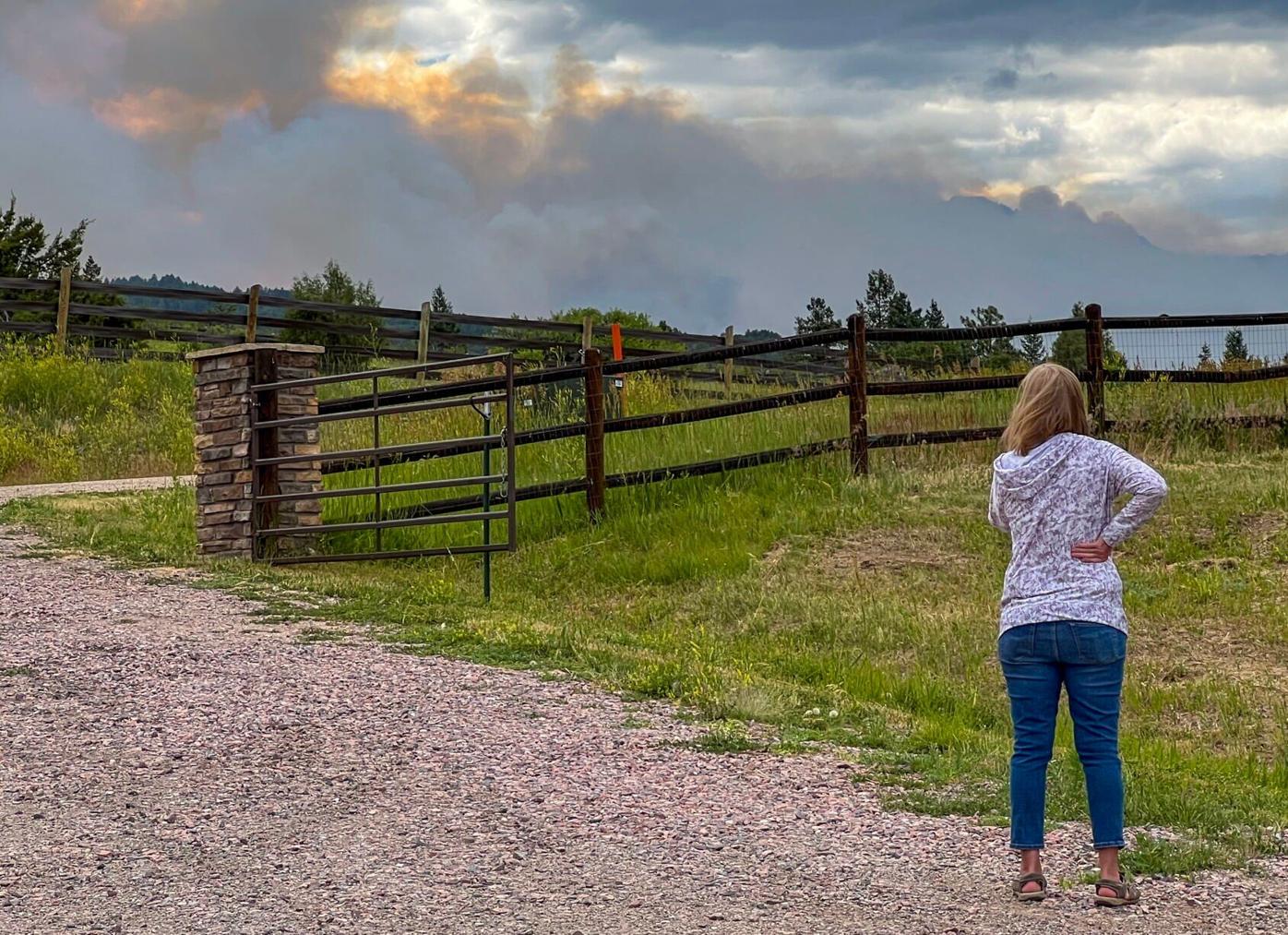Oak Ridge fire surpasses 1,000 acres burned, 0% contained
Fire officials in Pueblo County are utilizing a full suppression strategy in battling the Oak Ridge fire that remains at 0% containment on Thursday, six days after being sparked by lightning, according to the Rocky Mountain Area Complex Incident Management Team.
Officials said the fire had surpassed 1,000 acres and remained at 0% containment by Wednesday evening. A Thursday morning flyover conducted by the Colorado Division of Fire Prevention and Control’s Multi-Mission Aircraft estimated 1,025 acres burned so far.
Incident Commander Casey Cheesbrough said Thursday that crews would be utilizing a combination of tactics to slow the fire spread, including having airtankers dropping fire retardant on the blaze and helicopters dropping water.
Additionally, crews will be working to construct hand and dozer lines along the fire edge where it is safe to do so. Crews will continue to construct indirect lines as well where direct access to the blaze is not possible.
According to Cheesbrough, approximately 226 fire personnel are on the scene Thursday morning.
Firefighters are said to have made progress through Wednesday as crews continued to reinforce hand and dozer lines on the east and northeast perimeters of the blaze as a way to keep the fire from spreading toward Beluah.
“The remaining fire perimeter in the northern and western portion and to the south, is in steep and rugged terrain and unacceptable to safe ground operations,” Cheesbrough said.
“In those areas, aviation resources worked aggressively to slow the fire’s progression with airtankers dropping eight loads of retardant along the remaining fire perimeter and helicopters dropping water throughout the day to slow the fire’s progression.”
Cheesbrough continued, saying the work conducted by the aviation crews has allowed fire managers to scout areas where firefighters can continue to construct indirect fire lines utilizing natural features like rock outcroppings, roads and trails.
In a media briefing on Thursday, Troy Mueller, operations detections chief for Rocky Mountain Area, said the biggest challenge has been the inaccessibility in those steep rugged areas, making it impossible to deploy ground forces safely.
“We are not sure how long this fire is going to burn, Mueller said, “There will be an increase in acreage due to the fire continuing to burn out in this rugged, steep areas where we are not able to put firefighters.”
Mueller added that the northwest area have been the biggest area of growth in the last two days, and they’ve estimated it would take six hours to get a crew out of that area if they were to put them in there right now.
The aerial bucket drops and water tankers have been successful in suppressing the fire, but it isn’t putting the fire out.
“We realize that this fire is going to be on the landscape for a while, and that we’re not going to be able to put the forces in here to reinforce those areas where we’re putting down retardants and water drops,” Mueller said.
For handling the fire, one option the team is looking at is utilizing the burn scar from the 2016 Junkins Fire, which Meuller said they are confident the fire would not run through the burn scar.
Officials said they have several plans in how to handle the fire. “You can fight fire and try to predict where it goes, but a fire is going to do what it wants to do,” Mueller said.
Temps Thursday have cooled slightly south of Colorado Springs in the fire’s territory, along with an increase in humidity. Afternoon thunderstorms will potentially bring an opportunity for heavy rainfall, hail and gusty winds, according to the National Weather Service.
According to Mueller, the wind from the thunderstorms have been pushing the smoke back to the southeast toward towns. He said residents may see more smoke, but there is not a current cause for concern of the fire spreading in that area.
To ensure it doesn’t, there is a team monitoring the area, and there are also three air quality monitors to make sure the air quality does not become unsafe for the Beulah community.
Mandatory evacuation orders for residents along the Middle Creek Canyon Road remain in place Thursday morning. Residents of Vine Mesa, Cascade Avenue, Pine Avenue and Beluah Highlands Road remain under a pre-evacuation status.
The U.S. Forest Service announced a months-long closure beginning Wednesday of the Pike-San Isabel National Forests and the Cimarron and Comanche National Grasslands due to the impacts of the Oak Ridge fire, according to a social media announcement from the agency.
According to Forest Service officials, the closure will be in effect through July 26, “unless rescinded,” the post states.
Additionally, Middle Creek Road, the Pueblo Mountain Park and the Nature & Wildlife Discovery Center are temporarily closed to the public .
“First off, the Pueblo Mountain Park is NOT currently in danger,” Park officials said.
“However, NWDC is committed to fully supporting the Oak Ridge fire firefighting efforts. As a result, as of Wednesday, NWDC will be temporarily closing the park to visitors until further notice.”
“To keep roads clear for emergency services and potential evacuees, Sheriff Lucero has requested that people who do not live in Beulah avoid coming to the area. During this closure, local residents will not have vehicle access to the park and are encouraged to limit their use to essential activities only.”
Lastly, a Temporary Flight Restriction above the fire zone also remains in place Thursday.
“Please do not fly drones or unauthorized aircrafts in the area as they are a danger to firefighting aerial operations. Remember, if you fly, we can’t,” officials said.





